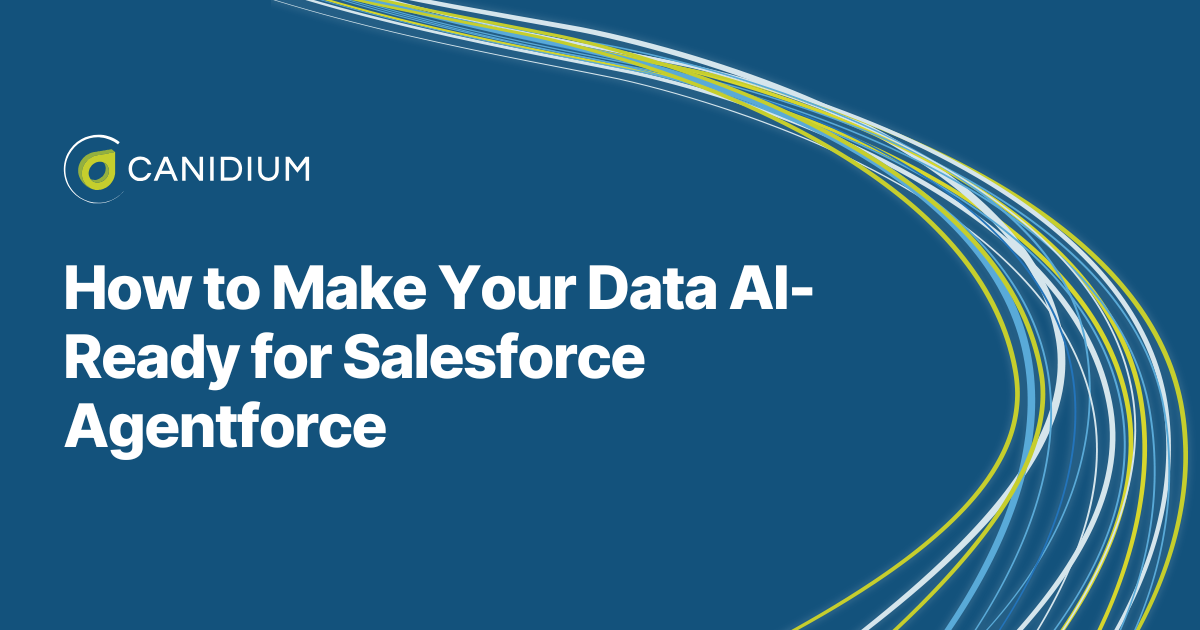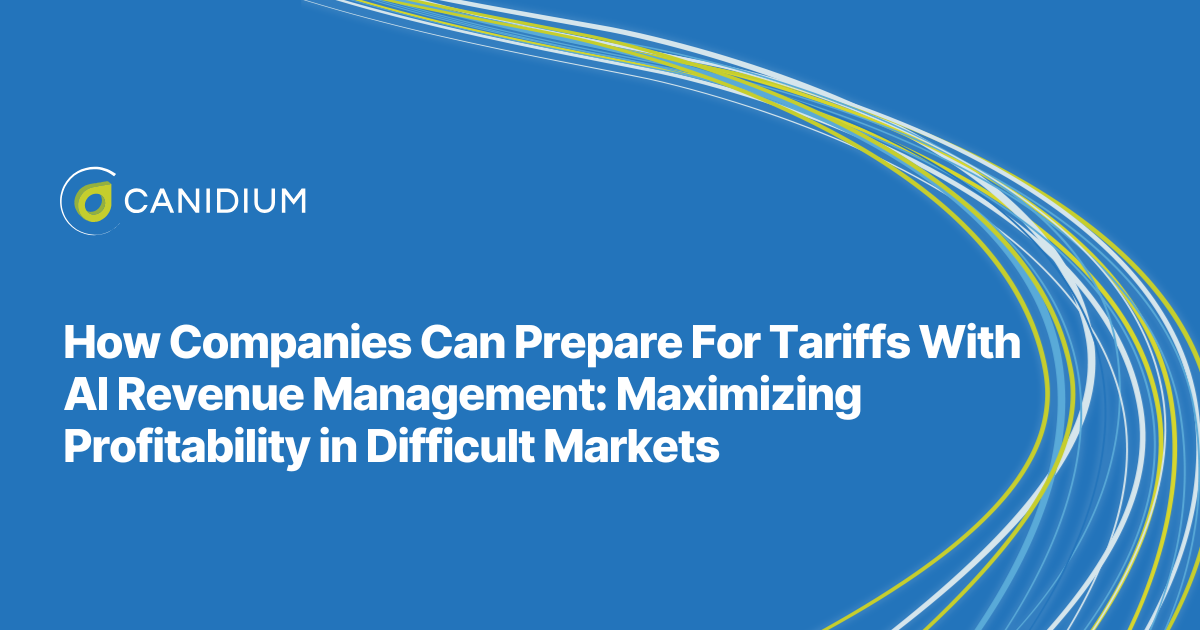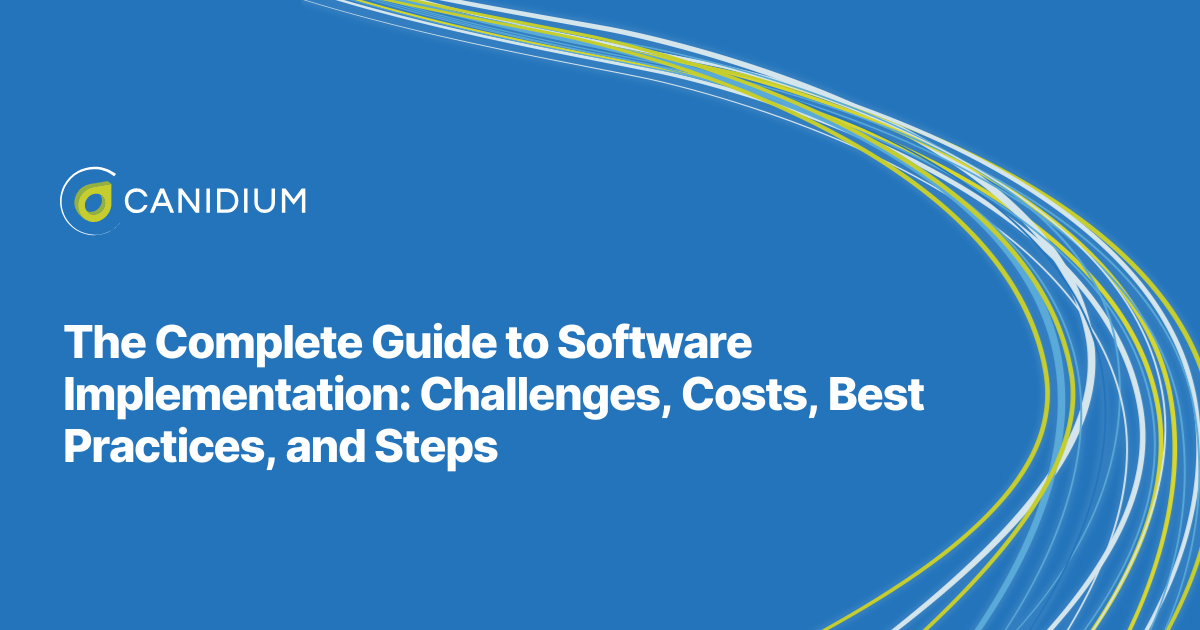Artificial intelligence, machine learning, and language models are undeniably the future of business technology, yet the novelty of generative AI means most companies' systems are not designed and configured for these powerful tools. Consequently, before you can make the most of the valuable insights, automation capabilities, and autonomous agent solutions like Salesforce's Agentforce provides, you need to make your data AI-ready.
AI-ready data must be clean and structured to facilitate automatic task workflows and sophisticated customer experience management. However, achieving and maintaining high-quality data is not a one-time task—it requires a structured process to identify, fix, and prevent issues over time. While each organization has unique data challenges, there are three major types of data problems you are likely to encounter: metadata inconsistencies, data gaps, and mislabeling.
To help you set up AI-ready data, this article explores these challenges and how to resolve them effectively.
3 Challenges That Prevent AI-Ready Data
AI-ready data is at the root of successful new solution implementations. To achieve effective data governance, you must first diagnose and address data quality issues.
Here are the three most common issues found in complex datasets:
Metadata Problems
Metadata serves as the backbone of data organization, encompassing field names, values, and descriptions that dictate how information is stored and interpreted. However, many organizations struggle with metadata inconsistencies that can lead to confusion and inefficiencies. One common issue is the presence of duplicate field names, where two fields may appear identical to users but have different backend names, creating redundancy and misinterpretation. Additionally, outdated values clutter databases, causing AI systems like Agentforce to rely on obsolete or irrelevant information. Finally, organizations that pull from external sources may have integration challenges, causing silos that prevent the generation of accurate actionable insights. Without structured metadata, businesses risk fragmented data environments where agents and AI-powered tools struggle to operate efficiently.
For example, consider a sales organization that has multiple fields labeled "Customer Status," but in the backend, each instance has different classification criteria. One field may categorize customers as "Active" or "Inactive," while another might include statuses such as "Prospect" or "Closed-Won." When AI attempts to process customer data, these inconsistencies can lead to inaccurate automation, reporting errors, or miscommunication between teams.
Data Gaps
Data gaps occur when critical fields are left empty or contain incomplete information, disrupting AI functionality and automation processes. If an AI system relies on specific data points to trigger actions or generate insights, missing values can cause significant operational failures. For instance, if a customer support chatbot depends on a "Last Interaction Date" field to determine follow-up timing, an empty field might result in missed engagement opportunities or redundant outreach efforts.
These gaps often stem from inconsistent data entry practices, system migrations, or legacy databases that did not enforce mandatory field populations. A real-world example can be seen in CRM systems where sales representatives fail to input lead source data. Without this information, marketing teams cannot accurately attribute revenue to specific campaigns, leading to inefficient budget allocation.
Mislabeling and Poor Data Descriptions
Mislabeling issues arise when field names are ambiguous, misleading, or lack proper descriptions, making it difficult for both human users and AI to understand the purpose of stored data. Many system administrators create fields on demand without documenting their intended use, assuming team members will intuitively recognize their function. However, as organizations grow and teams change, undocumented fields can lead to incorrect usage and hinder AI effectiveness.
For example, a company might have a field labeled "Client Type," but its actual function is unclear. Is it meant for internal classification based on revenue tiers, or does it indicate the customer's industry? Without clear descriptions, employees might use the field inconsistently, leading to fragmented data analysis and flawed AI-driven recommendations.
Agentforce and similar AI tools rely on well-documented metadata to process information accurately. Organizations can ensure that data is labeled correctly and used consistently by adding explicit field descriptions and enforcing standardized naming conventions. A well-structured database allows AI to make more informed decisions, improving efficiency and minimizing errors.
The Four-Step Approach to AI-Ready Data Hygiene
To ensure high-quality data long-term, you will need to follow a structured process and develop a robust data governance framework. Based on our experience implementing cutting-edge solutions, you can prepare your data for a new AI solution by following this four-step process:
Step 1: System-Wide Data Sweep
Before implementing an AI tool like Agentforce, conduct a full audit of your data environment. Automated scripts can analyze the entire system, identifying redundant, inconsistent, or missing data points. This step is crucial in detecting:
- Duplicate field names
- Old or obsolete values
- Unused or redundant fields
- Areas with missing critical data
Step 2: Pinpoint Specific Issues
Once the audit is complete, problems can be categorized into metadata inconsistencies, data gaps, and mislabeling issues. Instead of attempting a massive cleanup project all at once, organizations should:
- Focus on the fields most critical to their operations
- Prioritize data that directly impacts AI and automation efficiency
- Determine if existing data can be salvaged or needs replacement
Step 3: Data Remediation and Transformation
After identifying problem areas, take targeted actions to correct them:
- Filling Data Gaps: Use automation or manual entry to populate missing information.
- Transforming Metadata: Merge duplicate fields and update obsolete values.
- Enhancing Data Labeling: Add descriptions to fields to make their purpose explicit.
Step 4: Preventing Future Data Issues
Once data is cleaned, organizations must implement governance measures to maintain integrity:
- Validation Rules: Require key fields to be populated before records can be saved.
- Automated Checks: Regularly sweep for inconsistencies and outdated values.
- User Training: Ensure employees understand the importance of proper data entry.
Successfully Structuring AI-Ready Data
Clean data is the backbone of any successful AI-powered system, yet all too many organizations are missing out on valuable automation capabilities and insights hidden in messy data. By following a systematic approach to identifying, addressing, and preventing data issues, you can maximize the effectiveness of tools like Agentforce.
Rather than viewing data hygiene as a one-time project, effective system management requires a mindset of continuous improvement. This ensures that your data remains structured, reliable, and ready for the future of automation.






